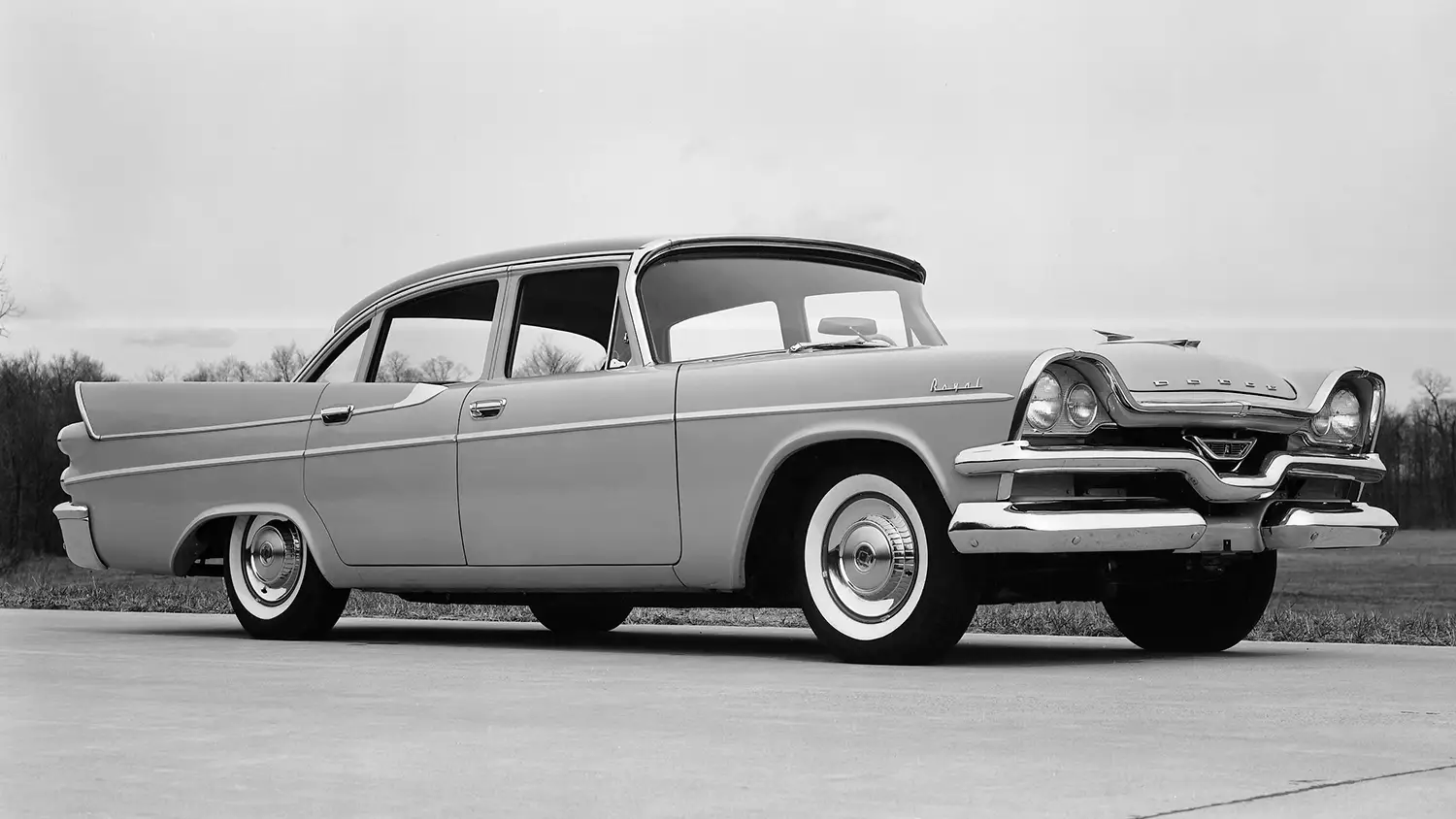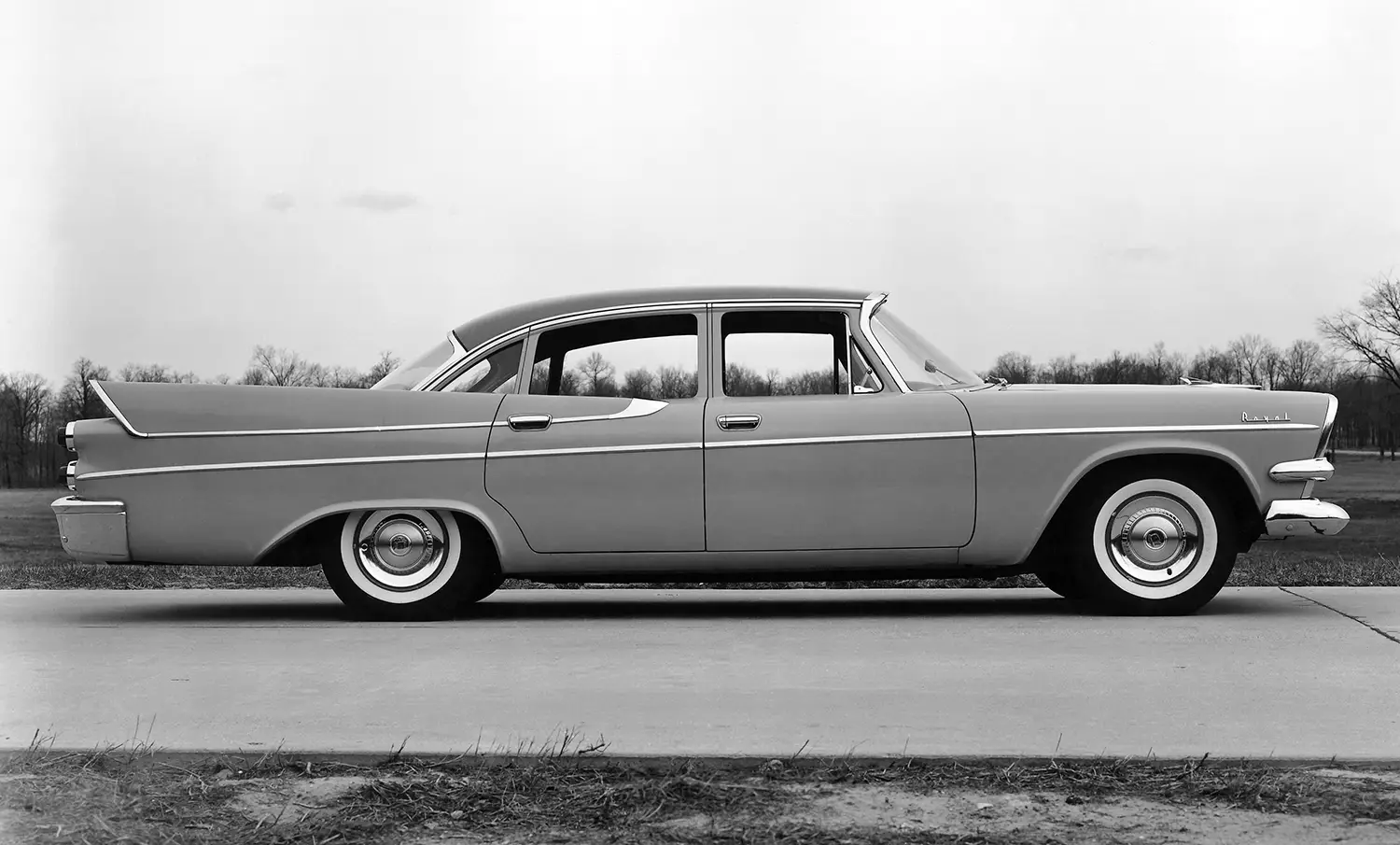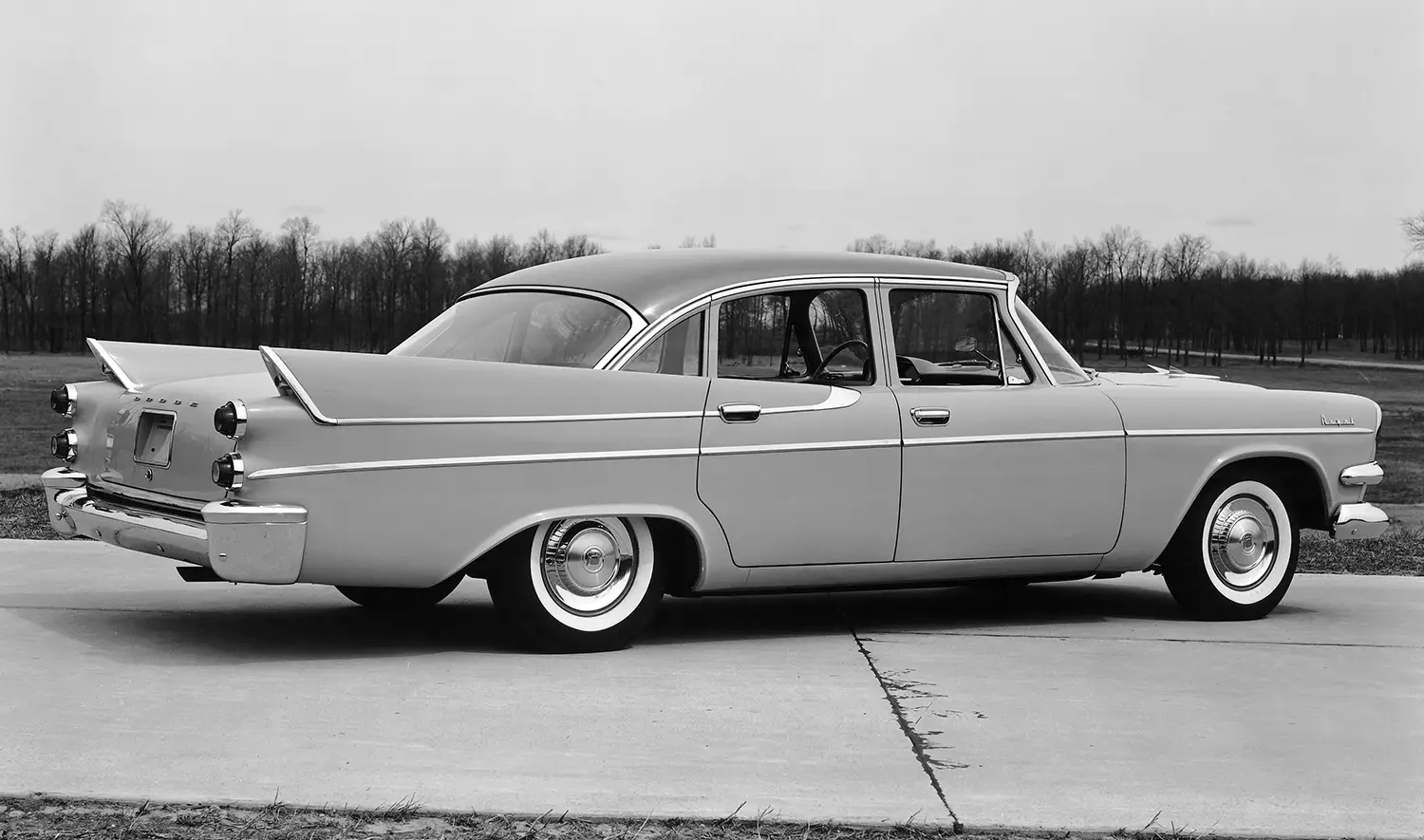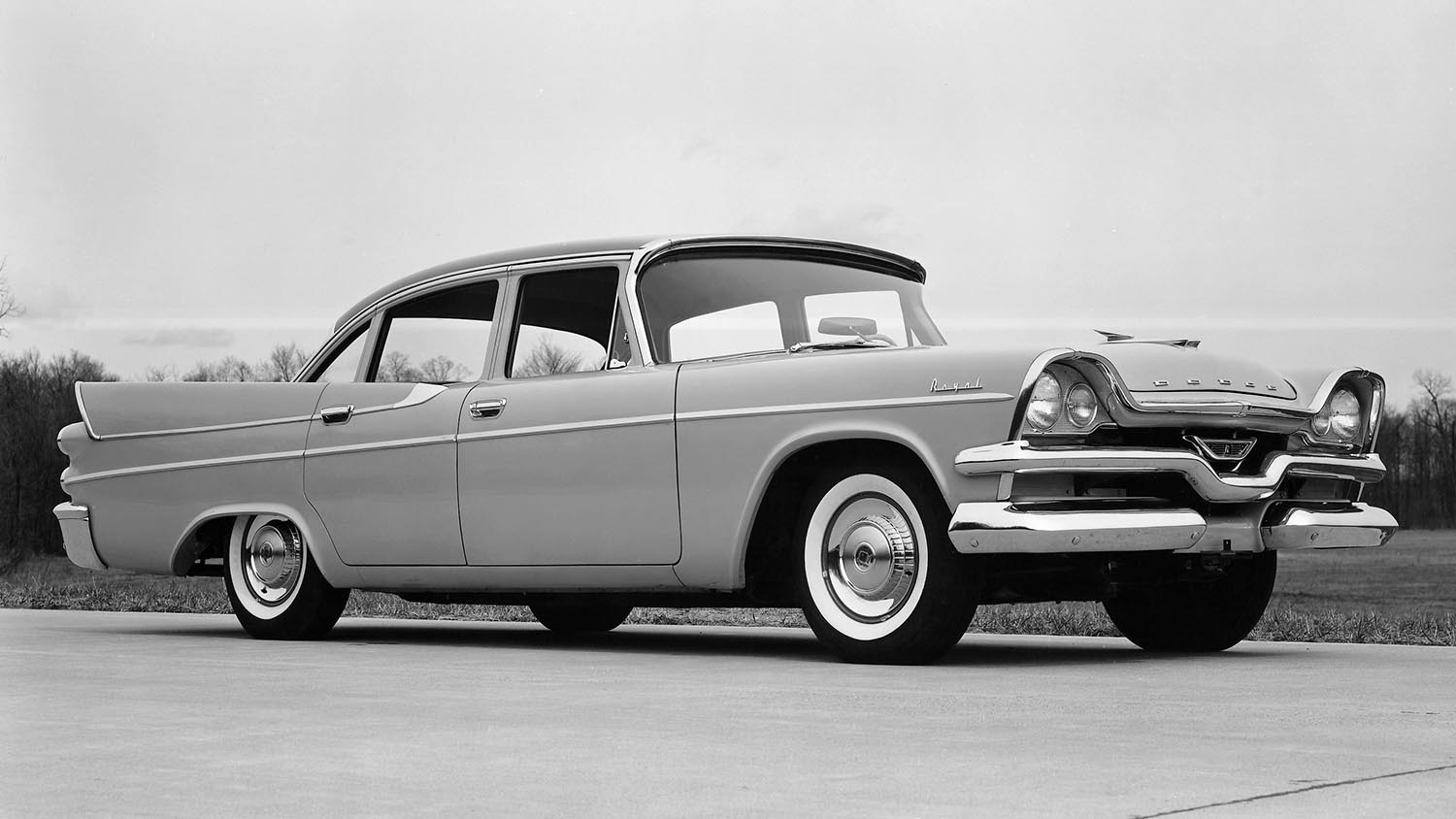
The 1957 Dodge Royal Sedan represents a pivotal moment in American automotive history, thanks to its dramatic “Forward Look” styling. This mid-level Dodge was a shining example of Chrysler Corporation’s design revolution. It was truly longer, lower, and wider than anything Dodge had offered before, consequently making the competition look suddenly old-fashioned. Furthermore, the audacious styling of the 1957 Dodge Royal Sedan perfectly captured the spirit of the jet-age American road.
The Audacious “Forward Look” Design
Chrysler’s design chief, Virgil Exner, believed in a sleek, low profile with a sense of motion. He delivered this vision with his “Forward Look” campaign in 1957, applying it across the entire Chrysler family. The Royal Sedan showcased this look brilliantly, standing apart from its rivals. Its sweeping lines and low roofline gave the car an undeniable sense of speed, even at a standstill.
Swept-Wing Fins and Chrome Detailing
The most dramatic visual element was certainly the tailfins, which Dodge branded as “Swept-Wing” styling. These large, triangular fins flowed seamlessly from the rear fenders, evoking the look of a fighter jet. Additionally, chrome trim was used strategically, wrapping around the headlights and framing the distinctive grille opening. The use of this trim highlighted the car’s sleek, muscular contours.

Engineering Beyond the Sheetmetal
The engineering advancements were just as significant as the visual flair of the 1957 Dodge Royal Sedan. While the competition often stuck to older setups, Dodge debuted its new Torsion-Aire Ride front suspension system. This innovative system employed torsion bars up front, offering a vastly superior ride and more stable handling characteristics. The introduction of this modern suspension helped plant the large sedan firmly on the road.
The Push-Button Revolution
Inside the cabin, the technology continued to make a statement. You would find the advanced TorqueFlite three-speed automatic transmission was controlled by a unique set of push-buttons. These buttons were placed conveniently on the dashboard, to the driver’s left, replacing the conventional column or floor shifter. This futuristic feature solidified the car’s image as an innovator. It was a stylish, practical, and truly modern approach to gear selection.
Under the Hood: The Red Ram V8 Power
The 1957 Dodge Royal Sedan offered robust power to match its bold aesthetic. The standard engine for the Royal was the powerful, reliable 325 cubic-inch Red Ram V8. This engine demonstrated Dodge’s commitment to performance and a strong motoring experience. For enthusiasts, even more potent options were available across the Dodge line, including the formidable D-500 variants.
Performance Specifications
The standard 325 cubic-inch Red Ram V8 engine gave the Royal line a solid foundation for performance. This V8 featured a two-barrel carburetor, yielding a respectable 245 horsepower and 320 lb-ft of torque. Paired with the TorqueFlite transmission, the car moved with authority. Buyers could also opt for the four-barrel carburetor version, upping the output to 260 horsepower for an even livelier experience. The engine design utilized a polyspherical combustion chamber, which was Dodge’s effective stepping stone to the legendary Hemi engine.
The legacy of the 1957 Dodge Royal Sedan lies in its daring fusion of style and substance. It was a car that dared to look forward, forcing other automakers to scramble to update their own aging designs. Its iconic fins, advanced suspension, and powerful V8 engine cemented its place as a quintessential 1950s auto icon. The Royal Sedan perfectly embodied the optimistic, jet-fueled excess of the era, truly marking it as an unforgettable machine.
Disclaimer: Content on this site is for informational purposes only. Vehicle specs, pricing, and availability may change. Always verify details with official sources before making decisions. Opinions are those of the authors.
Source: Stellantis

